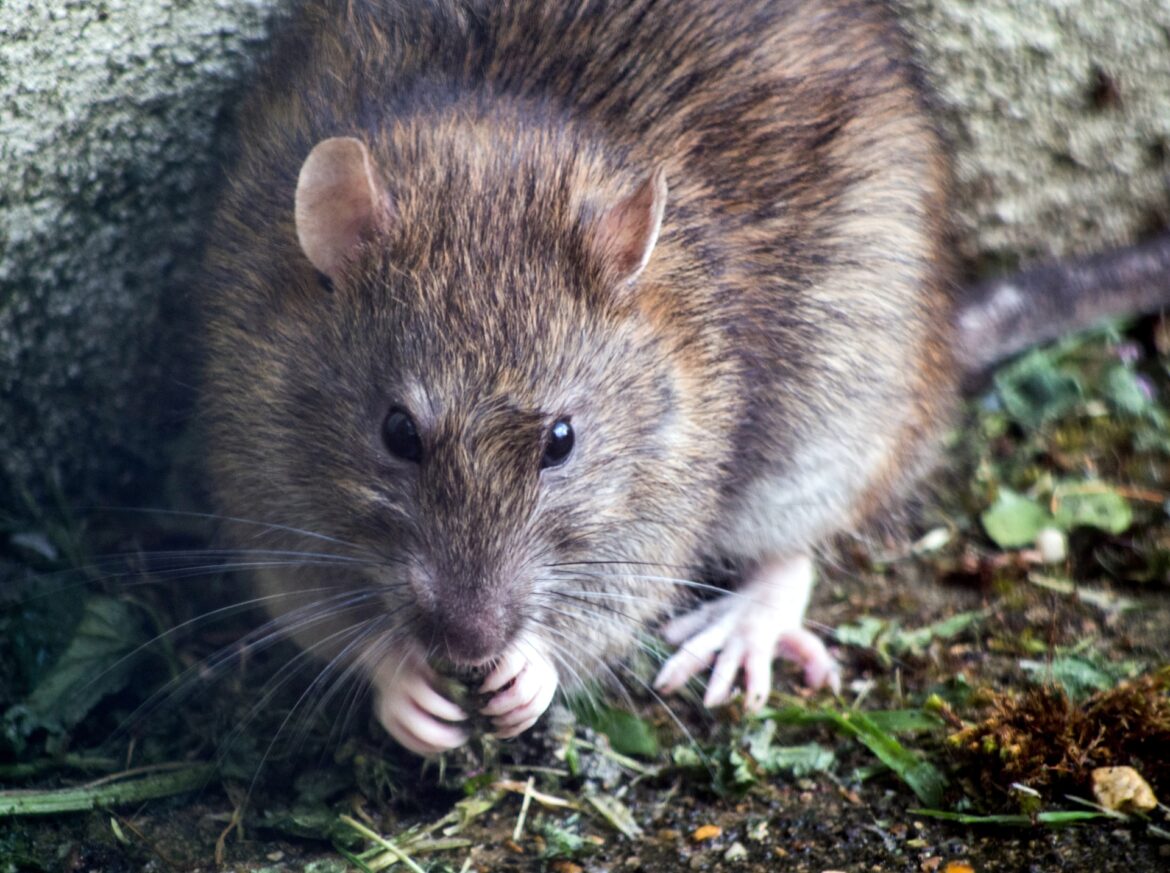Rats are the whiskered intruders nobody wants in their home, yet ever since the Covid-19 pandemic, their global population has been booming rapidly.
Not only that, but they are unpleasant, carry many diseases and can be dangerous to humans, their homes, and their possessions.
But before setting traps everywhere, why don’t you first check out these nine interesting facts about rats?
Abilities
Rats are famous for their various abilities, making them stand out from other rodents.
One interesting fact about the little rascals is that they are terrible at climbing. In fact, their inability to climb is one of their biggest downfalls. If you trap them in a location where they can’t go up, you can keep them stuck in the same spot for as long as you want.
What makes them suck at climbing is their inability to scale a smooth vertical surface or even a slightly inclined one.
Although rats can’t climb, they have developed other skills to survive in the wild. For instance, they are excellent swimmers, which might be why they spend so much time in sewers.
While almost all vermin are excellent swimmers, rats can hold their breath for up to three minutes and even tread water for up to three days.
This ability comes in handy when they need to cross massive bodies of water or seek refuge from danger and predators that hunt them down for food.
Communication and sense of smell
Another curious ability that rats possess is their communication method.
They talk to each other but don’t use words to do it, but instead use high-frequency sounds that are unnoticeable to anyone around them – including humans.
These sounds serve as a way of warning other rats of potential danger or to call their attention to something important – like the peanut butter jar you left open on the kitchen counter.
On top of that, rats have an excellent sense of smell, which helps them navigate through any environment. Their keen sense of smell enables them to locate food sources or detect predators from a distance.
Perhaps, those two abilities are what makes them proficient at invading people’s homes and gardens.
Thermal Regulation
Another interesting fact about rats is their unique way of regulating body temperature.
These rodents are one of many cold-blooded creatures – their body temperature isn’t steady. Therefore, they have evolved a unique way to manage heat dissipation. Rats use their tails, which are devoid of fur, to help regulate their temperature.
They either wind their tails around their bodies when they need to keep warm or stretch them out to dissipate heat when the weather’s too hot.
Memory
Rats are also known to have an impressive memory, for they can remember complex pathways and past events.
Researchers have found that rats can remember a path once they pass through it. This means they can remember how rooms and hiding spots look, a crucial survival skill. Rats use their memory to navigate complex mazes, avoid predators and find their way back to food sources.
Interestingly, rats can also remember faces, including those of other rats.
Studies have shown that rats can recognise and remember each other’s faces, even after a long time. Their facial and spatial memory makes rats useful in research and development – humans can teach them complex tasks and then observe rat behaviour to make deductions.
Social Behavior
Rats are highly social and form complex structures within their colonies. They have a strong sense of community and show concern for the well-being of other group members. These rodents often live in large groups, with up to 150 rats living together in a single colony. No wonder London is having such a big issue with rats.
Within these groups, humans can observe a strictly hierarchical social structure, with dominant rats taking charge of the group and controlling access to resources such as food, water and shelter.
Using a variety of body language techniques, such as grooming, tail wagging, and even wrestling. rats establish social bonds and resolve conflicts. They can also exhibit empathy towards other rats, such as grooming and cuddling injured rats for comfort.
Adaptability
Rats are highly adaptable and thrive in a variety of different environments.
You can find them all over the globe, from hazardous rural areas to urban cities, for they have adapted to living in different environments by developing a variety of traits and behaviours.
For example, rats that live in urban areas have learned to scavenge for food in trash cans and dumpsters. They have also become more nocturnal to avoid humans and other predators during the light of day.
In addition to their behavioural adaptations, rats can also be physically adept, which allows them to survive in harsh environments.
For instance, rats in cold climates have thicker fur and a higher body fat percentage to help them keep warm. Those living in arid environments evolved to conserve water so they can survive for long periods without drinking any.
Furthermore, the rodents can adapt to immediate changes in their environment, allowing them to survive almost anything despite the harsh conditions.
Eyesight
Rats have poor eyesight and are practically colourblind. They are dichromatic, which means they can only see shades of blue and green.
This is because rat eyes have fewer cone cells than human eyes, and cone cells are responsible for colour vision.
However, rats compensate for their poor eyesight with other senses, particularly their sense of smell and hearing.
Despite their poor eyesight, rats are proficient at finding their way through someone’s house. They use their keen sense of smell to detect the presence of food and their memory to recall pathways and locations.
Rats can also use their hearing to avoid danger, such as humans or cats.
Hygiene
Contrary to popular belief, rats are not as dirty as they seem. They spend several hours a day tending to their hygiene.
This includes rubbing their front paws on their face, licking themselves, and rubbing down their entire body. They also groom other rats, which is how they maintain social bonds within their colonies.
However, that shouldn’t fool you, for they still carry all sorts of dangerous pathogens which are harmful to humans and pets alike. Infestations can be quite hard and costly to remove, so your best bet is to rodent-proof your home in the first place.
Gnawing
Last but not least, rats are impressive gnawers. They can chew through almost anything.
In fact, their front teeth keep growing throughout their lives, so they need to gnaw on hard objects to sharpen them and regulate their size. Rats can chew through wood, plastic, and even concrete materials. They can even make a hole in metals like aluminium and copper, which is quite impressive if it didn’t make them so troublesome in the first place.
This ability to gnaw and chew through almost any object allows them to nest in walls, under floorboards, in-between furniture spaces and more. It’s problems such as these that warrant immediate attention – oftentimes from a professional rat removal specialist.
Conclusion
In conclusion, rats have a bad reputation as pests but possess remarkable abilities worthy of admiration.
From their impressive memory and gnawing abilities to their hygiene habits and navigating through complex environments, rats are fascinating creatures who adapt to their environment in quirky ways.
Understanding these facts helps us maintain a different perspective on their possibilities and ways of life.




